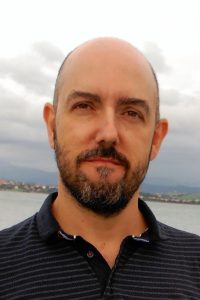Dr Javier Pascau

Javier Pascau received his degree in Telecommunication Engineering from Universidad Politécnica de Madrid, where he also earned a PhD in Biomedical Engineering. He is Full Professor in the Department of Bioengineering at Universidad Carlos III de Madrid and a senior researcher at the Instituto de Investigación Sanitaria Gregorio Marañón. His research focuses on medical image analysis, surgical guidance, and the personalization of image-guided therapies. He has authored over 130 peer-reviewed journal and conference papers, with more than 4,000 citations and an h-index of 37. He teaches both undergraduate and graduate courses in Medical Image Analysis and has supervised eight PhD theses, with three more in progress. Professor Pascau has completed international research stays at Brigham and Women’s Hospital (Surgical Planning Lab, Boston, 2014) and Queen’s University (PerkLab, Ontario, Canada, 2022). He maintains active collaborations with clinical departments in traumatology, surgery, rheumatology, radiation oncology, and gynecology at hospitals including Gregorio Marañón, La Paz, Clínica Universidad de Navarra, and Fundación Jiménez Díaz.
________________________________________
Augmented Reality in the Operating Room: Lessons Learned and Future Directions
The operating room (OR) remains one of the most challenging environments for the seamless integration of advanced visualization technologies. Over the last decade, the IGT research group at UC3M has developed augmented reality (AR) systems tailored for surgical guidance on devices such as smartphones and head-mounted displays (HMDs). These approaches have been validated on patient-specific 3D-printed phantoms and have involved collaboration with surgeons during clinical procedures. This talk will highlight key lessons learned from translating AR prototypes into real surgical contexts, including applications in craniosynostosis, orthopedic surgery, and surgical training. It will address technical challenges such as registration accuracy, the ergonomics and hand-gesture interactions of HMDs, communication with other platforms and workflow integration within existing surgical protocols. Looking ahead, the talk will explore future directions expected to shape the next generation of AR-enhanced surgical environments: multimodal data fusion (combining imaging, tracking, and AI), advanced calibration and registration strategies, and the regulatory and ethical considerations necessary for clinical adoption.
Dr Pietro Mascagni
Dr. Pietro Mascagni is a surgeon in training with a PhD in Surgical Data Science. He leads the Video-Based Assessment and Computer-Assisted Intervention Research Facility at Fondazione Policlinico Universitario Agostino Gemelli IRCCS in Rome and serves as Clinical Research Advisor for AI and Computer Science at IHU-Strasbourg. His work focuses on AI applications for surgical safety, now being translated to clinics through Scialytics, a spinoff he co-founded to develop AI-powered medical devices that measure and reduce surgical risk. He has started or directs several initiatives promoting surgeons’ involvement in AI, including the SDS Summer School at IHU-Strasbourg, the AI Masterclass at EAES, and CLINICCAI at MICCAI. He serves on the EAES Technology Committee and AI Subcommittee, the Board of Directors of SICE, and the SAGES Surgical Data Science Task Force. Pietro is Associate Editor at the European Journal of Surgical Oncology and NPJ Digital Surgery.
________________________________________
Artificial Intelligence for Surgical Quality Assurance
Intraoperative activities are major drivers of patient outcomes. However, our ability to measure and improve surgical performance has been limited by the siloed nature of operating rooms. The convergence of minimally invasive surgery, computer science, and initiatives by surgical societies offers an unprecedented opportunity to improve surgical care. Deep learning methods allows us to extract meaningful insights from surgical videos at scale and to provide unobtrusive real-time intraoperative assistance, allowing a paradigm shift towards a culture of continuous quality assessment and improvement. Starting from laparoscopic cholecystectomy, we will explore how computer scientists and surgeons are collaborating to make sure such technology is developed and implemented for the benefit of patients and healthcare systems.

